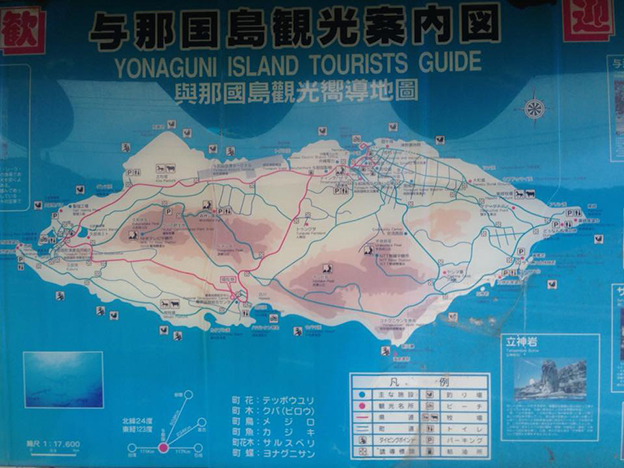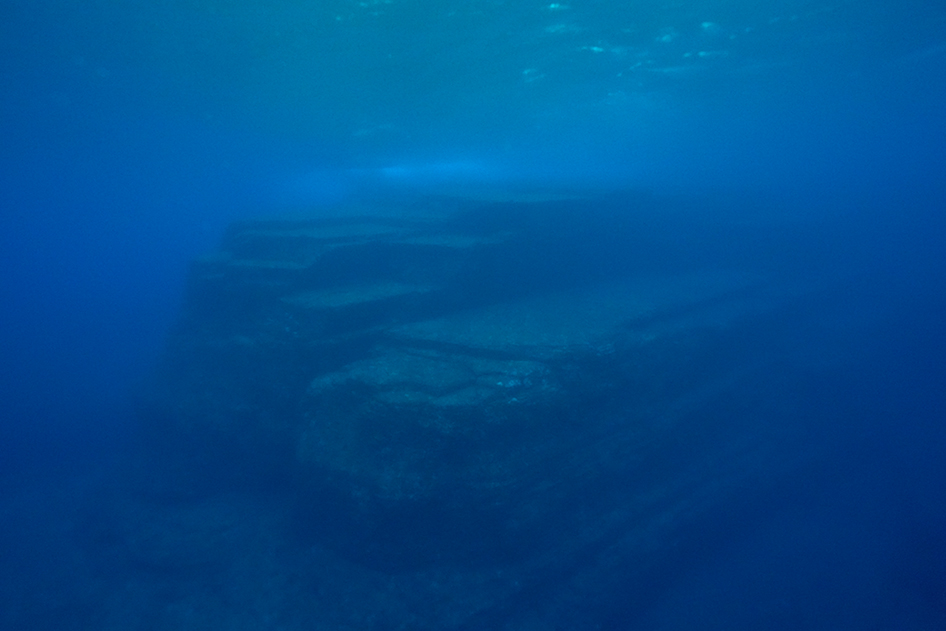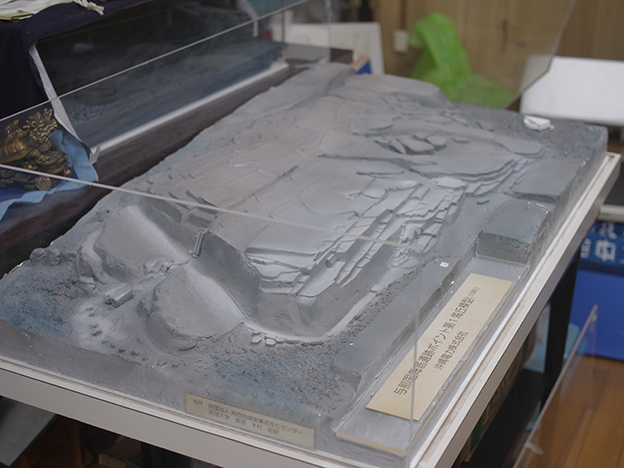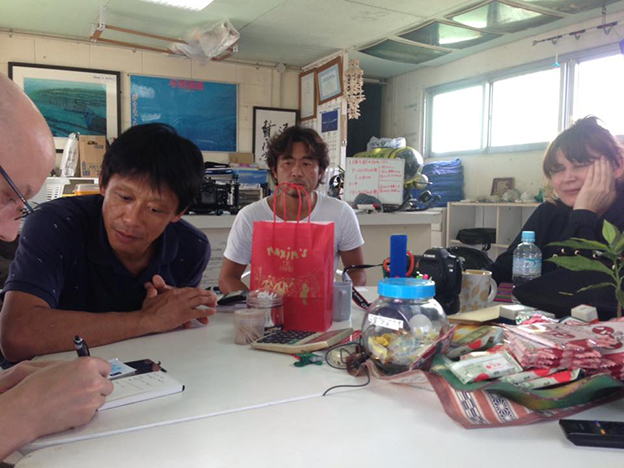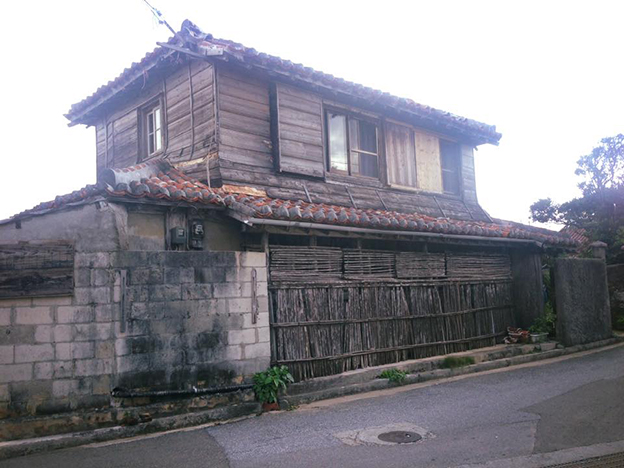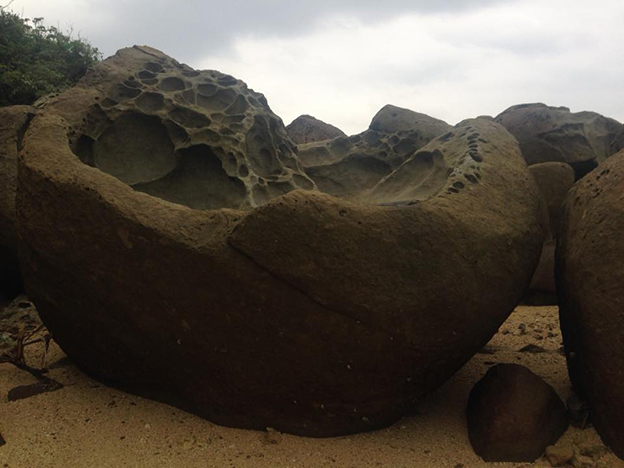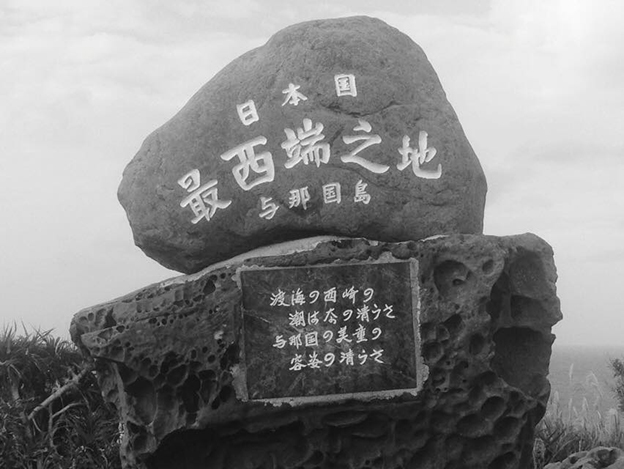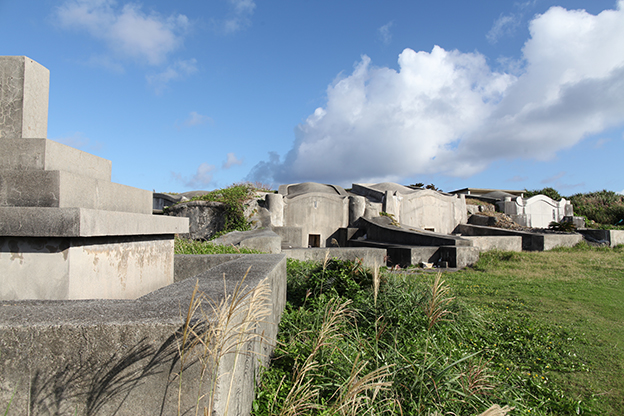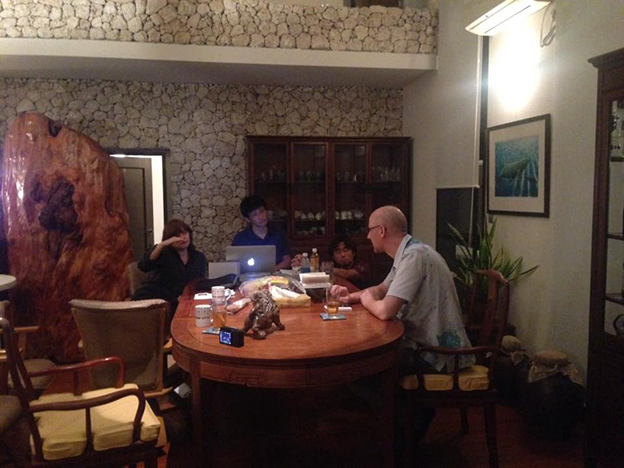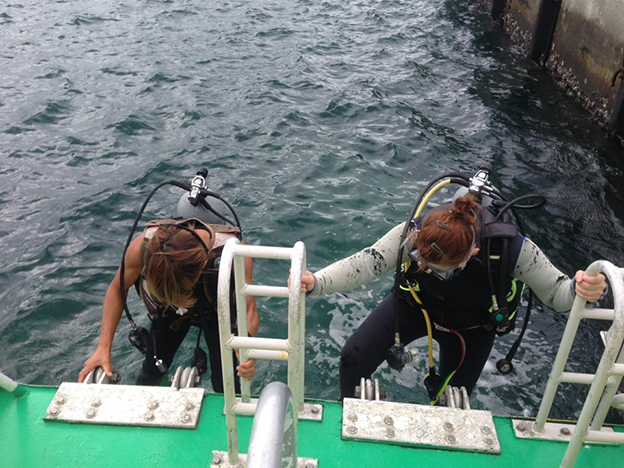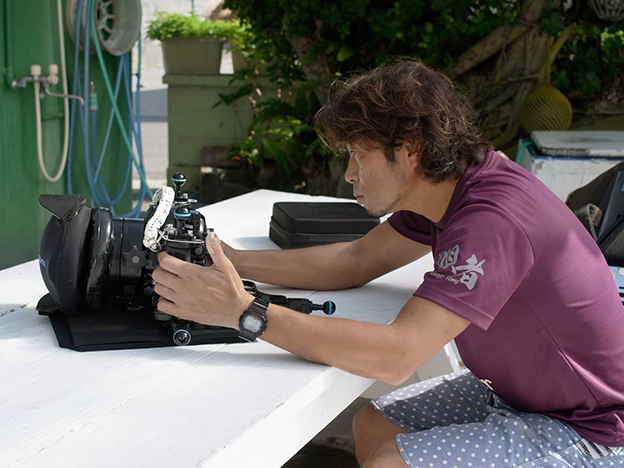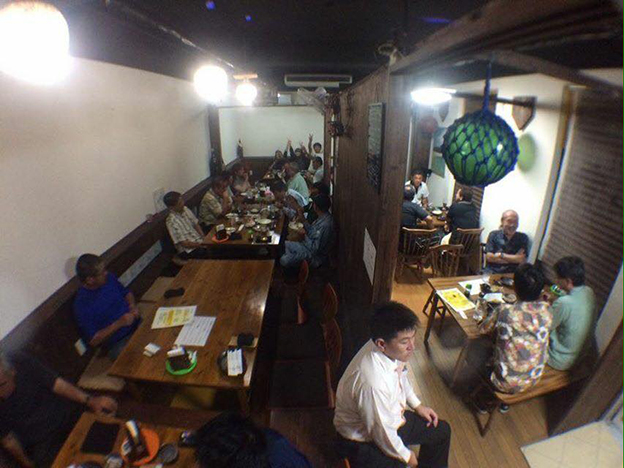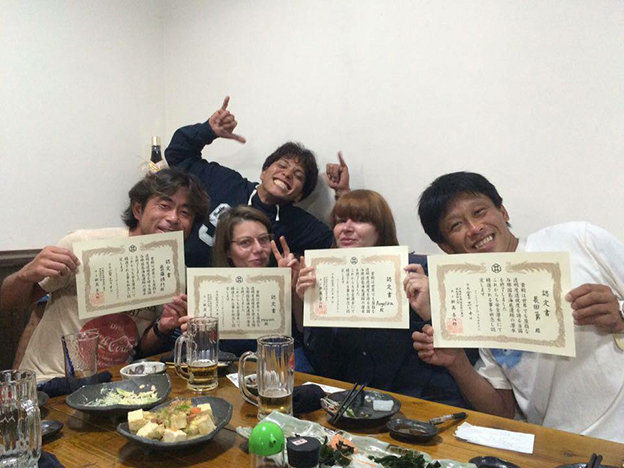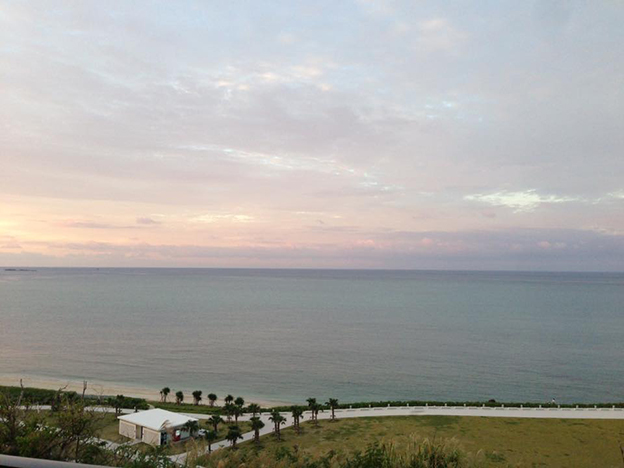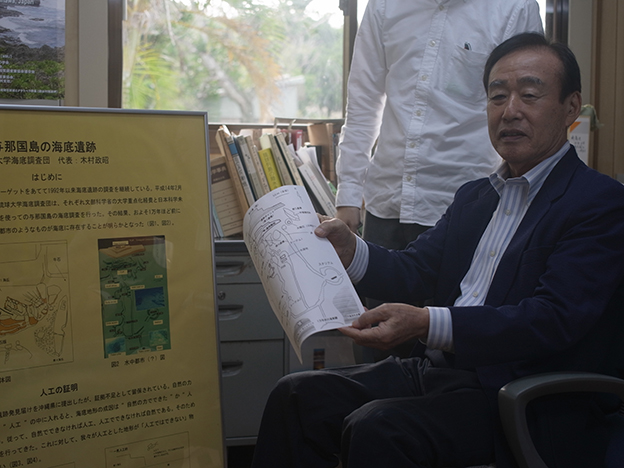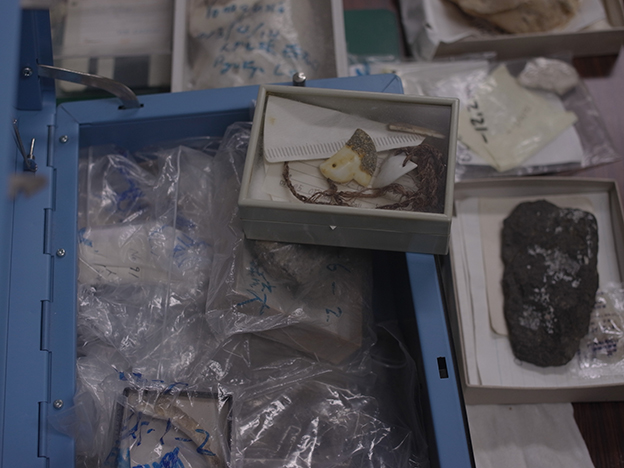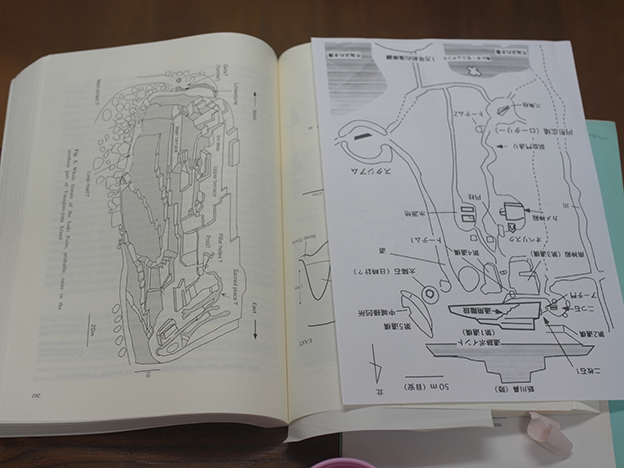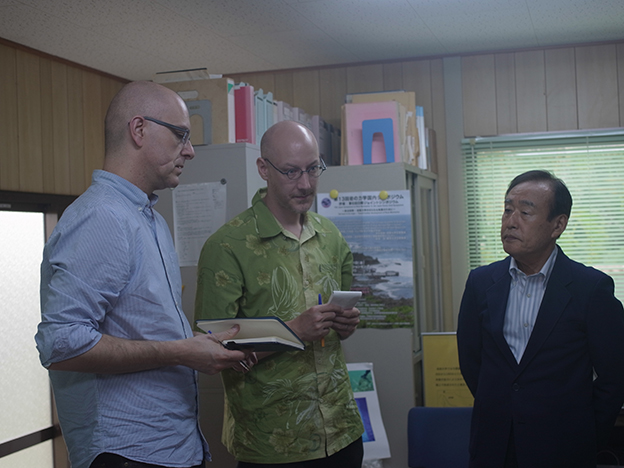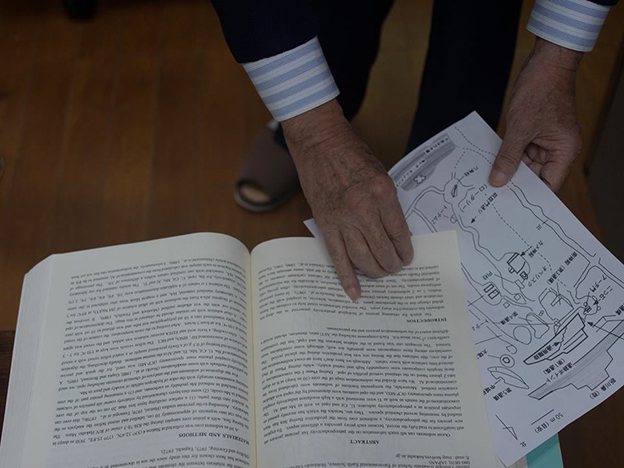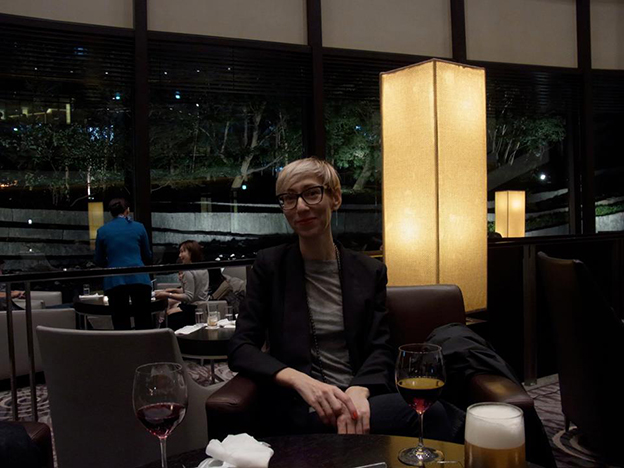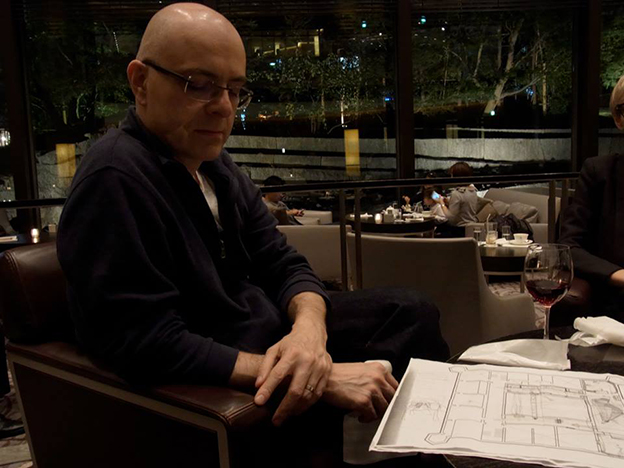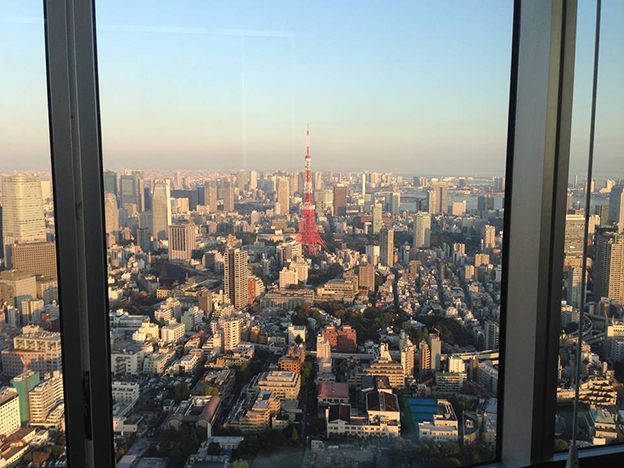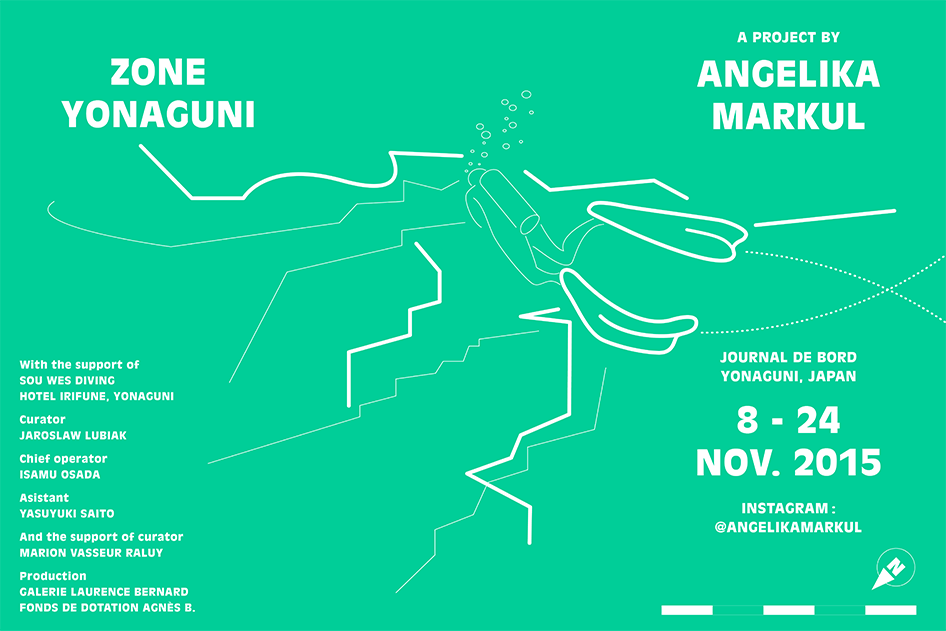Logbook
Yonaguni, Japan
8 – 24 November 2019
With the support of Sou wes diving and Hotel Irifune, Yonaguni
Curator Jaroslaw Lubiak
Chief operator Isamu Osada
Asistant Yasuyuki Saito
And with the support of the curator Marion Vasseur Raluy
Production Fonds de dotation Agnès B, Galerie Laurence Bernard
The underwater monument off the coast of Yonaguni Island inJapan is the inspiration of Angelika Markul’s project. It is estimated that the structure dates back to around 9000-10000 years ago, when it would have been above water. Since its discovery in 1986-1987 there has been a debate about whether the structureis completely natural, or is a man-made artifact. The second theory (promoted by the scientist who dedicated long studies to the monument, professor Masaaki Kimura) suggests that the Yonaguni Monument may be a relics of an ancient civilization. Which includes Kimura’s studies in a long speculative tradition of lost civilizations, lands or islands, such as Plato’s myth of Atlantis or theosophical theories about Lemuria. However, lost civilisations are not the core interest of Markul’s project, but the mysterious artifact (of natural or human origin) and the experience of loss that is closely linked to it. The mystery of the structure (as of other similar object) lays in the impossible desire of gaining certainty on the beginnings of the man and the culture. The feeling of loss of these origins stimulates fantasies and theories on lost lands and scientific initiatives of deepening the past. Out of it Markul appropriates the idea of penetrating the depth.
The desire of immersion has also to be created within the spectators. That’s why the mystery of the Yonaguni monument is deepened. Therefore Angelika Markul’s project fills the exhibition’s space with the installation composed of a movie on a basis of underwater material shot on site, as well as the sculpture interpreting the remnant formation. The space is dark, illuminated by the projection that reflects on the sculpture and infuses the space with a blue-greenish glow.
The experience of the immersion into something past and lost or upcoming and inevitable is the central idea of Angelika Markul’s work; the idea that viewers are meant to be confronted with. While, the feeling of penetrating the depth examines all the myths about the past and the fantasies about the future. More precisely, this is about confronting the mystery that leads to the loss of any kind of certainty. The loss of certainty excites the desire of searching for other possibilities and states a new beginning.
The discussion was then continued by geologist Wolf Wichmann and independent researcher Graham Hancock. The former argues for the thesis of the natural origin of the Monument, while the latter is certain that it is the work of a vanished civilization. The enigma of the Yonaguni Monument remains unanswered. And yet, beyond the resolution of the secret, it is the role of imagination on the lost origins that seems most interesting here. The Monument not only awakens this imagination, but at the same time gives hope of finding what has been lost – an idea of the return to the original times.
Selected Bibliography
Robert Schoch, Voices of the Rocks, Harmony Books, New York, 1999.
Graham Hancock, Underworld: The Mysterious Origins of Civilization, Three Rivers Press, New York 2002.
